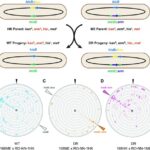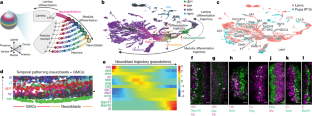生態系の健全性を示す指標としての無脊椎動物 Invertebrates as indicators of ecosystem health
2022-04-07 カリフォルニア大学リバーサイド校(UCR)

Image of a stream encountered by researchers in the Sierra Nevada mountains. (Matthew Green/UCR)
・研究チームは、水生生物の保護に向けた一歩として、生物多様性を予測する新しい理論を高山帯の渓流に適用した。この理論と、その根拠となった現地調査の結果は、現在、学術誌『Ecological Monographs』に詳しく掲載されています。
・このチームは、相互につながった水の流れるシステムを、転用や、無制限の土地開発による生息地の破壊から守ることを推奨しています。水が本来あるべき姿で流れていれば、そこに生息する生物が利用できる資源の数が増え、より高い多様性を維持することができます。
<関連情報>
- https://news.ucr.edu/articles/2022/04/07/how-mountain-streams-signal-climate-change
- https://esajournals.onlinelibrary.wiley.com/doi/10.1002/ecm.1520
河川生態系における生物多様性のパターンとプロセスを再考する Rethinking biodiversity patterns and processes in stream ecosystems
Matthew D. Green,Kurt E. Anderson,David B. Herbst,Marko Spasojevic
Ecological Monographs First published: 28 March 2022
https://doi.org/10.1002/ecm.1520
Abstract
A major goal of community ecology is understanding the processes responsible for generating biodiversity patterns along spatial and environmental gradients. In stream ecosystems, system specific conceptual frameworks have dominated research describing biodiversity change along longitudinal gradients of river networks. However, support for these conceptual frameworks has been mixed, mainly applicable to specific stream ecosystems and biomes, and these frameworks have placed less emphasis on general mechanisms driving biodiversity patterns. Rethinking biodiversity patterns and processes in stream ecosystems with a focus on the overarching mechanisms common across ecosystems will provide a more holistic understanding of why biodiversity patterns vary along river networks. In this study, we apply the Theory of Ecological Communities (TEC) conceptual framework to stream ecosystems to focus explicitly on the core ecological processes structuring communities: dispersal, speciation, niche selection, and ecological drift. Using a unique case study from high elevation networks of connected lakes and streams, we sampled stream invertebrate communities in the Sierra Nevada, CA to test established stream ecology frameworks and compared them to the TEC framework. Local diversity increased and β-diversity decreased moving downstream from the headwaters, consistent with the river continuum concept and the small but mighty framework of mountain stream biodiversity. Local diversity was also structured by distance below upstream lakes, where diversity increased with distance below upstream lakes, in support of the serial discontinuity concept. Despite some support for the biodiversity patterns predicted from the stream ecology frameworks, no single framework was fully supported, suggesting “context dependence”. By framing our results under the TEC, we found species diversity was structured by niche selection, where local diversity was highest in environmentally favorable sites. Local diversity was also highest in sites with small community sizes, countering predicted effects of ecological drift. Moreover, higher β-diversity in the headwaters was influenced by dispersal and niche selection, where environmentally harsh and spatially isolated sites exhibit higher community variation. Taken together our results suggest that combining system specific ecological frameworks with the TEC provides a powerful approach for inferring the mechanisms driving biodiversity patterns and provides a path toward generalization of biodiversity research across ecosystems.


